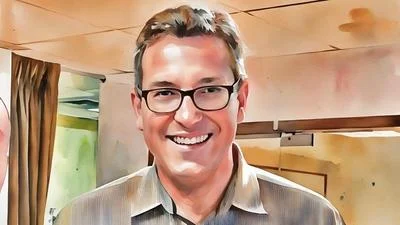Clean Energy Champions know decarbonization is an opportunity for cleaner air, tens of thousands of union jobs, a revitalized manufacturing sector, and infusions of capital in communities that have suffered the most from our dependence on fossil fuels. The Office of Energy Efficiency and Renewable Energy (EERE) is making sure every American understands how the transition to clean energy can benefit their community—and we need your help spreading the word.
A good way to get started is to understand how the most energy-intensive sectors of our economy interact by learning about EERE’s offices and decarbonization initiatives. Whether you’re a student, a professional working in the energy sector, an activist, or someone who simply cares about the future of our planet and wants to get involved, check out the information and resources below—they’re great fodder for dinner-table conversation.
Collaborative Work Across Sectors
At EERE, we focus our decarbonization efforts on key sectors, including the electric grid, industry, transportation, residential and commercial buildings, and agriculture.
EERE collaborates across 11 technology offices to accelerate the decarbonization of these sectors, supporting networks of researchers, technicians, and non-governmental partners to develop innovative, cost-effective solutions that can be developed, demonstrated and then deployed in the field.
Each office is part of one of EERE’s three core divisions:
- Renewable Power
- Energy Efficiency
- Sustainable Transportation
Setting Priorities
DECARBONIZE THE ELECTRIC GRID
EERE has set a goal to achieve a carbon-pollution-free electricity sector no later than 2035 by supporting technologies that enable the United States to generate all electricity from clean, renewable sources. EERE technology offices are working to reduce the cost of renewables and accelerate their integration with the power grid, while maintaining reliability, resilience and cost effectiveness.
Breakdown of greenhouse gas emissions by sector.
DECARBONIZE TRANSPORTATION
The transportation sector is the largest source of greenhouse gas emissions in the country. EERE is working to decarbonize across road, rail, sea and air: by accelerating the transition to electric vehicles, meeting 100% of the nation’s sustainable aviation fuel needs by 2050, and enabling commercially viable hydrogen fuel cell long-haul heavy-duty trucks by 2030.
DECARBONIZE INDUSTRY
Industrial processes account for about 23% of domestic greenhouse gas emissions. EERE research and development helps improve the energy efficiency of industrial processes, expand the use of hydrogen in hard-to-decarbonize industries, and advance technologies that capture and use carbon emissions.
REDUCE THE CARBON FOOTPRINT OF BUILDINGS
Residential and commercial buildings are responsible for a combined 36% of energy-related greenhouse gas emissions. EERE is committed to a massive reduction of the carbon footprint of the American building stock by 2035. To achieve this goal, EERE is focused on the deployment of new, affordable housing and advanced, energy-efficient retrofits for residential and commercial buildings in rural, urban, and suburban areas alike.
DECARBONIZE AGRICULTURE
Agriculture represents nearly 10% of domestic greenhouse gas emissions. EERE has expanded its work in the agricultural sector, with a focus on developing biofuels, improving the efficiency of off-road agricultural vehicles, on-site conversion of animal waste to clean energy, and enhancing water- and energy-efficient irrigation systems.
Extending the Benefits to Every American
New career opportunities, lower home energy bills, cleaner air, and more affordable and accessible clean transportation are just some of the material benefits you and your neighbors can expect from a net-zero carbon economy.
JOBS
Millions of jobs are being created to keep pace with the accelerating deployment of renewable energy, efficiency improvements, and clean transportation; some of those clean energy jobs are here at the Department of Energy, including through the Clean Energy Corps. The U.S. wind industry now employs more than 116,000 workers in construction, manufacturing, and other fields. The solar industry is expected to employ 500,000 to 1.5 million by 2035.
COMMUNITY SERVICES
Helping low-income Americans reap the benefits of energy efficiency has been a longtime project for EERE. Now, after an unprecedented, $3.5 billion investment through the Bipartisan Infrastructure Law, EERE’s Weatherization Assistance Program has the resources to improve the energy efficiency and safety of more than half a million low-income households across the nation.
ENERGY JUSTICE
The Biden Administration’s Justice40 initiative is a whole-of-government commitment to deliver 40% of the overall benefits of federal investments in the clean-energy transition to disadvantaged communities. Several programs are delivering on this commitment. The Inclusive Energy Innovation Prize offers cash incentives to clean-energy entrepreneurs in communities historically underrepresented and underserved in the energy sector. The Communities LEAP pilot initiative helps communities plan and execute clean-energy development strategies on a local level.
TAX INCENTIVES
On the transportation front, electric vehicles are increasingly economical alternatives to gas-powered cars. Many states already offer tax incentives and rebates for going electric. At home, you can get a federal tax credit for going solar as well as state incentives for renewables and efficiency.
AFFORDABILITY
EERE is making it more convenient and affordable for you to complete energy-saving projects at home. Install a cold-climate heat pump, a geothermal heat pump, a solar energy system, a wind energy system, or conduct a home-energy assessment to find out which energy-saving measures are right for you.
Now that you have all this great information, don't keep it to yourself. Be a Clean Energy Champion by telling others about it, and become part of the climate solution.
Original source can be found here.








